It might seem a bit odd that I am asking for python code to calculate the area of a polygon with a list of (x,y) coordinates given that there have been solutions offered in stackoverflow in the past. However, I have found that all the solutions provided are sensitive to the order of the list of (x,y) coordinates given. For example, with the code below to find an area of a polygon:
def area(p):
return 0.5 * abs(sum(x0*y1 - x1*y0
for ((x0, y0), (x1, y1)) in segments(p)))
def segments(p):
return zip(p, p[1:] + [p[0]])
coordinates1 = [(0.5,0.5), (1.5,0.5), (0.5,1.5), (1.5,1.5)]
coordinates2 = [(0.5,0.5), (1.5,0.5), (1.5,1.5), (0.5,1.5)]
print "coordinates1", area(coordinates1)
print "coordinates2", area(coordinates2)
This returns
coordinates1 0.0
coordinates2 1.0 #This is the correct area
For the same set of coordinates but with a different order. How would I correct this in order to get the area of the non-intersecting full polygon with a list of random (x,y) coordinates that I want to make into a non-intersecting polygon?
EDIT: I realise now that there can be multiple non-intersecting polygons from a set of coodinates. Basically I am using scipy.spatial.Voronoi to create Voronoi cells and I wish to calculate the area of the cells once I've fed the coordinates to the scipy Voronoi function - unfortunately the function doesn't always output the coordinates in the order that will allow me to calculate the correct area.

